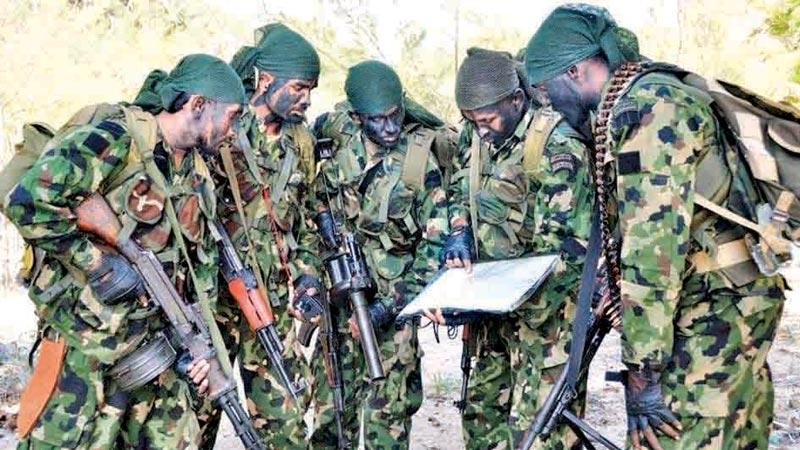
Sri Lanka is an island nation strategically positioned in the Indian Ocean. Hence her land and maritime based defence takes a unique role. The army has reigned supreme on land, and displayed its prowess in many theatres of conflict. It is a historic milestone as the army celebrates 70 years of service to the motherland on October 10. The military history of ancient Ceylon is laden with episodes of invasions and counter resistance. The first recorded military engagement unfolded on the serene beaches with the arrival of the banished Prince Vijaya.
In 1802, a rifle regiment was formed with Sinhalese, African and Malay soldiers and named the 1st Ceylon Regiment. In 1861, the colony of Ceylon was bestowed with her first Volunteer Corps. This formation was referred to as the Ceylon Light Infantry Volunteers. Slowly but steadily, the army branched out to raise units such as, the Ceylon Artillery, Mounted Infantry, Medical Corps, Engineer Corps and Supply and Transport Corps. In 1910, the force was subject to effective combat readiness and renamed Ceylon Defence Force. The men were deployed to active duty in England.
With the advent of the Second World War the defence force raised some new units including, Military Police Corps, Signal Corps and Colombo Town Guard. In 1949, the Army Act was passed in Parliament establishing the Ceylon Army. A regular force was formed on October 10 1949, under the command of Brigadier Roderick Sinclair. In 1950, the first batch of Ceylonese was sent to the Royal Military Academy Sandhurst, England, for training. Realizing the urgent need to train future cadets locally, the Army set up their first training school in the salubrious hills of Diyatalawa. Today, this academy has blossomed into a degree awarding institution and has produced many Generals since then. The academy has its own riding stables where officer cadets learn equestrian skills. At the age of 47, Brigadier Anton Muthukumaru became the first Sri Lankan Commander of the Army. He was the dynamic visionary who began establishing the army cantonment at Panagoda. The Women’s Corps was formed in 1979. Since then the Army Women’s Corps has made a major contribution to defence, going to the extent of having a female parachute team.
The first commando course was conducted in February 1978, and the commando squadron formed in 1980. Today, the Commando Regiment has state-of-the-art defence tactics, boasting of her own Anti - Hijack and Rescue team which can be airborne to any location in the country. In addition, the Commando Regiment has a specialized kennel with an assortment of explosive detection, tracker and attack dogs. During the course of the prolonged 30 year conflict the army adopted and adjusted to various levels of threats incorporating technology and enhanced training. In the final stages of the humanitarian operations in 2009, the Infantry regiments, Special Forces, Armoured Corps, Air Mobile Brigade, Artillery and Mechanized Infantry units all contributed, with many young men laying down their lives in the line of duty.
Forward march
In this era of sustained peace, the army has taken the dimension of a capacity based force. During the aftermath of the Easter Sunday attack carried out by radicalized extremists the army sprang into action to arrest the situation. The army engineers rebuilt the damaged church at Negombo and are still building the church in Batticaloa. To date they continue to guard churches, temples and schools operating under the OCC - Overall Operations Command. In the recent past when the country was assailed by natural disasters it was the troops who actively engaged in rescue operations as first responders, supporting other military forces and local police. Whether it was the relentless rains which unleashed floods and landslides or a collapsed high rise building, the Sri Lankan soldier was willing to display his spirit of altruism, in saving others.
 The army can be applauded for setting up medical clinics, water purifying stations and food processing units to care for those in times of dire need. Even to this date in the Northern Province the army plays a pivotal role in helping the public in many areas. These silent contributions include demining operations and facilitating the return of people to their ancestral lands, painting and repairing of schools, hospitals and places of religious worship, organizing sports events for youth, providing books and computers to selected schools and celebrating local religious festivals with Tamil communities.
The army can be applauded for setting up medical clinics, water purifying stations and food processing units to care for those in times of dire need. Even to this date in the Northern Province the army plays a pivotal role in helping the public in many areas. These silent contributions include demining operations and facilitating the return of people to their ancestral lands, painting and repairing of schools, hospitals and places of religious worship, organizing sports events for youth, providing books and computers to selected schools and celebrating local religious festivals with Tamil communities.
In the area of regional security and inter-operability of forces the army has conducted the Colombo Defence Seminar, with the participation of many foreign military service chiefs and military analysts, where current security issues of the region were deliberated. In keeping our forces primed and ready, the annual field training exercise ‘Cormorant Strike’ was successfully concluded using members of the Commando and Special Forces along with the teams from the Sri Lanka Air Force and Sri Lanka Navy. These mock military missions also had foreign troops as observers.
In view of celebrating their anniversary, the army will be conducting religious observances in keeping with the Buddhist, Christian, Islam and Hindu traditions, with the participation of senior officers. The Army is a fine example where officers and ranks from the Sinhala, Tamil, Muslim and Burgher communities unite as one fraternity to serve Sri Lanka. The Sri Lanka Army will continue to play an important role as the defenders of the nation, as we make progress towards greater prosperity for all Sri Lankans.
